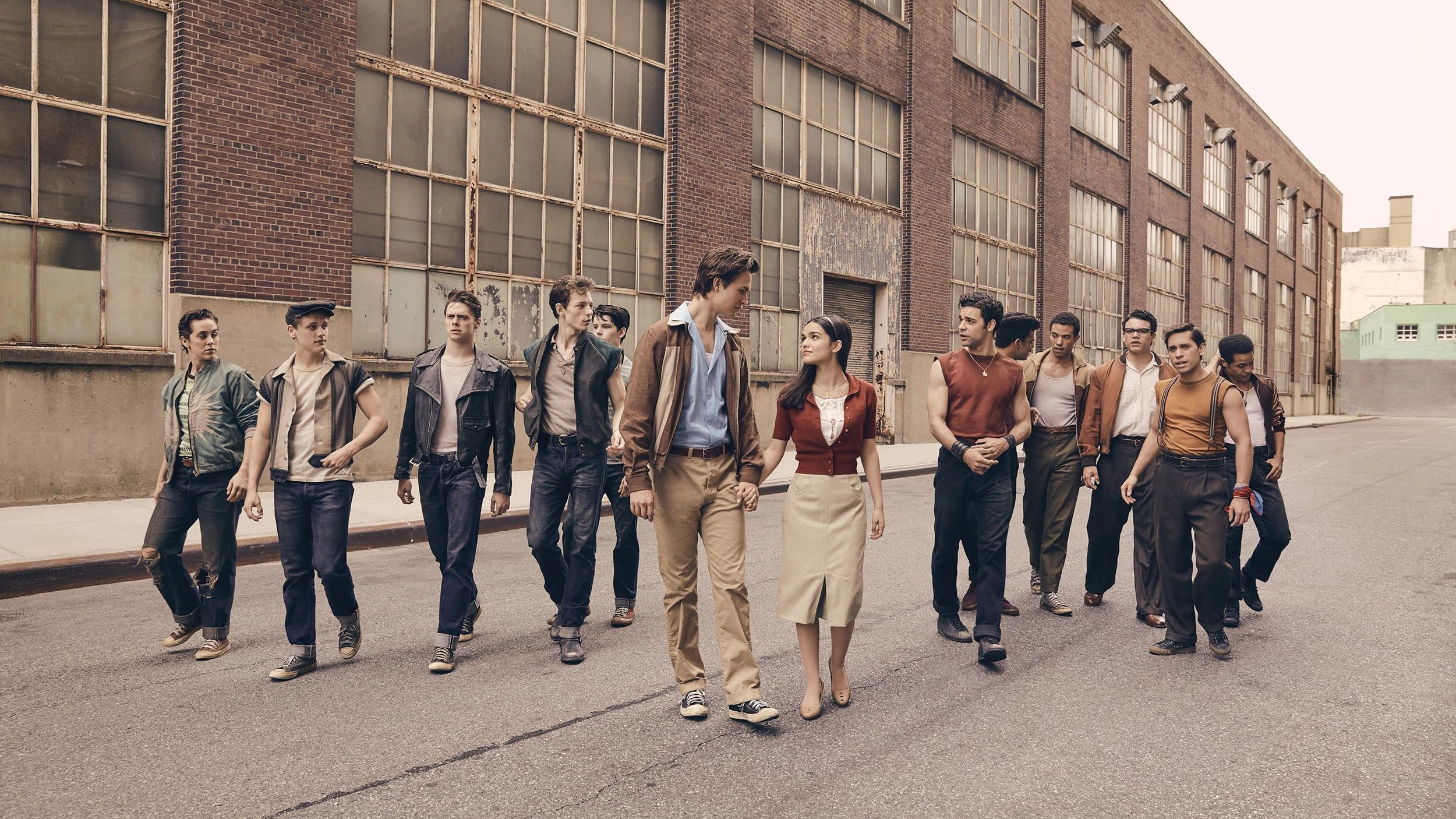West Side Story
20TH CENTURY
Few landmark musicals truly stand the test of time like West Side Story. A retelling of Shakespeare’s Romeo and Juliet set in a run-down New York neighbourhood – concocted by the absolute dream-team of Jerome Robbins, Leonard Bernstein, and the late Stephen Sondheim – the show debuted on Broadway in 1957 and, after becoming a groundbreaking success, first found its way onto film in 1961. Directed by Robert Wise and Robbins, this adaptation is by all accounts considered a masterpiece, a testament to a bygone musical golden age of Hollywood that also served as a dramatic transition into more serious, edgier musical fare – both for stage and screen. Sixty years after the original film swept audiences and accolades, West Side Story finds itself in the hands of Steven Spielberg, one of the most prolific filmmakers in the history of moviemaking, who has always expressed an interest in directing a musical. If there were any doubts that Spielberg – who has admittedly lost a step in recent years – could handle tackling a remake of one of the most revered musicals of all time, there should not be now. West Side Story (2021) is not only an improvement upon the original film but an experience that relishes in its source material and is meticulously crafted to dazzle at every possible moment.
The story follows the romance between Tony, the caucasian leader of a New York street gang called the “Jets”, and Maria, a Puerto Rican immigrant, making her way with her sister-in-law, Anita, and brother, Bernardo, leader of a rival Puerto Rican gang called the “Sharks”. As Tony and Maria’s romance blossoms, the tension between the gangs boils over, potentially leading to an all-out war. The script is updated by past Spielberg collaborator and playwright Tony Kushner, who makes small, meaningful changes to the plotting and character dynamics as well as motivations, giving the story added layers of emotional depth through a more mature, hardened, neutral look at the story’s themes of youthful passion, racism, and gentrification.
Spielberg outdoes himself in the director’s chair, bringing a vision and energy that has not been seen in his filmography for decades. The camerawork that he and cinematographer Janusz Kaminski are able to pull off is frankly astonishing at points, ducking and weaving through the massive ensembles performing the intricate, dense choreography from Justin Peck (who adapts Robbins original choreography wonderfully) with masterful ease. The musical sequences are precisely staged, bodies hurling themselves at each other with warrior-like intensity as the camera sweeps around them, conveying the full spectrum of movement and emotion on display, not a single moment becoming dizzying or incomprehensible. Every musical number impressively falls into place like dominos, from the joyfully explosive “America” to the hilariously inventive “Gee, Officer Krupke”. Even quieter moments, like the iconic “Tonight” number on the fire-escape set, are kept engaging and fresh through the ways Spielberg manages to frame the interplay between performers as continuously interestingly. For the most part, Spielberg is not content to just let actors stand there and sing to one another, as every bit of creative movement between actor and camera provides momentum that’s only bolstered by the fantastic editing from Sarah Broshar and Michael Kahn. The duo cut every moment deliberately and with urgency, unfolding the story in a way that feels compelling and compact without being rushed by giving every scene just enough time to breathe – and for the audience to truly bask. The music has aged surprisingly gracefully, Leonard Bernstein’s score sounds as lush and gorgeous as ever, with each song brought to new, soaring heights through the fantastic sound design, which should also be commended during the fight scenes – all the punches and hits sound brutal. On a technical level, West Side Story never falters, even down to the stellar lighting and production design that paint a desolate, almost post-apocalyptic portrait of New York through massive sets of decayed, condemned buildings barely held together by the cultures that inhabit them. All these moving parts coming together in a way that is comprehensible, let alone enjoyable, is miraculous and to say Spielberg is confident behind the camera would be the understatement of the century.
Equally confident are the performers in front of the camera. Newcomer Rachel Zegler is a superstar in the making, bringing a devastating tenderness and vulnerability to Maria while completely stealing the show vocally. Ansel Elgort shares excellent chemistry with Zegler and functions well as the charming Tony, who unfortunately remains the least interesting part of the story – though Kushner throws in some narrative wrinkles that do improve the character marginally. Ariana DeBose is killer as the fiery, witty Anita and is able to effortlessly shift into a dramatic mode when she is called upon to do so, David Alvarez’s Bernardo is a sympathetic and likeable antagonist with believable motivations, but perhaps the biggest surprise was Mike Faist as the Jets’ de facto leader and Tony’s friend, Riff, a performance that oozes raw, slimy charm and charisma. Rita Moreno, Corey Stoll, and Brian D’Arcy James round out the main cast in entertaining supporting roles, and the dance ensemble crushes every single number, remaining consistently magnetic.
It seems the stars themselves have aligned to make this feature work as well as it does. Between Spielberg and co delivering an absolute feast for the senses and giving us some of the best performances and most brilliant sequences of the year, West Side Story (2021) is nothing short of enchanting. A sweeping, romantic epic that more than justifies its existence sets a new bar for musical-to-film adaptations and serves as a welcome return to form for Steven Spielberg.


